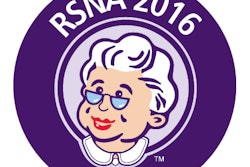
Could department stores be the future of breast screening? That was one of several fascinating proposals in an April 10 presentation on the future of mammography at the National Consortium of Breast Centers (NCoBC) meeting in Las Vegas. The upshot? Breast centers must get creative if they want to thrive in an era of consumer-driven healthcare.
Breast centers want to offer women high-quality care, but they also want to boost volume and streamline their workflow. This can be accomplished by "thinking outside the clinic" about how to provide patients with excellent breast cancer screening, according to Deirdre Saulet, PhD, a researcher at the Advisory Board Company in Washington, DC, who gave a talk on national trends in breast imaging utilization.
"While breast centers and healthcare providers have long invested in screening outreach and education, we're seeing them take more innovative approaches -- like hosting 'mammo parties' or partnering with department stores -- to make sure they're reaching their target audience and helping patients and providers make informed decisions," Saulet told AuntMinnie.com.
Beyond the clinic
Breast centers need to brainstorm novel ways to provide screening, according to Saulet. For example, take the mammography screening parties offered by a 1,000-bed hospital in the northeastern U.S., she said: Patients invite friends in groups of up to 10 or 12; the facility provides amenities such as robes, pedicures, and hors d'oeuvres, along with breast health education, while women wait for their exam.
Mammography volumes have increased at the hospital by 3% to 5%, and patient satisfaction ratings are close to 100%, Saulet told session attendees.
"This kind of setting allows women to discuss experiences with each other, and the relaxed environment facilitates relationships with providers as well," she said.
Another idea? Partner with an entity like a department store to provide mammography services.
NorthShore University Health System north of Chicago noticed a high incidence of advanced-stage breast cancer in the area, so staff brought together a focus group to determine why women weren't getting screened. The four-hospital network found that women didn't want to travel to clinical sites for mammograms, so it partnered with Nordstrom to offer breast cancer screening in a special suite with three mammography devices operated by one or two technologists. The exams take less than 15 minutes, and all results are sent to NorthShore for interpretation.
"Since the partnership began, NorthShore has provided about 8,000 screening mammograms at Nordstrom each year," Saulet said. "And the store benefits, too, because patients spend an average of $400 at Nordstrom on the day of their mammogram."
Better service through workflow hacks
Creative venues aside, there's nothing like good old-fashioned service to boost a center's volume, with attention to details such as patient comfort and quick turnaround times, Saulet said.
One way to increase patient comfort is to separate screening and diagnostic populations, according to Saulet. A four-hospital academic center did so by reserving Thursdays for diagnostic exams and biopsies, and scheduling screening appointments on the other four days (although diagnostic exams can also be performed other days of the week, if needed).
This tactic allows for same-day biopsies and a streamlined workflow for radiologists, surgeons, and technologists. It also boosts patient comfort by surrounding them with other people who are getting similar types of exams, which may mitigate anxiety, Saulet said.
Meanwhile, an eight-hospital network in the Midwest decided to focus on reducing report turnaround time as a way to boost patient satisfaction and increase referrals. The system had its technologists specialize in one task -- from medical history recording to performing screening mammograms or breast ultrasound -- that rotated each week. The experiment was successful, according to Saulet.
"Within six months, the average turnaround time for screening mammography results had decreased by 87%, patient satisfaction had increased by 52%, and the breast center was able to accommodate 16 additional screening mammograms per day," she said.
Finally, centers that add digital breast tomosynthesis (DBT) to their list of services will boost screening volume and improve the delivery of results. Saulet gave NCoBC attendees a case study from a 150-bed teaching hospital in the Northeast that started offering DBT screening at no additional charge. The hospital saw a 50% drop in recalls that first year, and it increased its roster of new patients by 10% the first year of using DBT and 25% the second.
"The decrease in callbacks allowed the hospital to accommodate the new volume growth and offer same-day DBT results, ultrasounds, and biopsies," she said.
In any case, offering novel ways for women to get screened -- and improving service once they're getting the exam -- can help a facility attract patients in an increasingly consumer-driven marketplace, Saulet told AuntMinnie.com.
"The more breast centers understand what matters to patients and what drives them to choose one imaging center over another, the better the service they offer will be," she said.




















